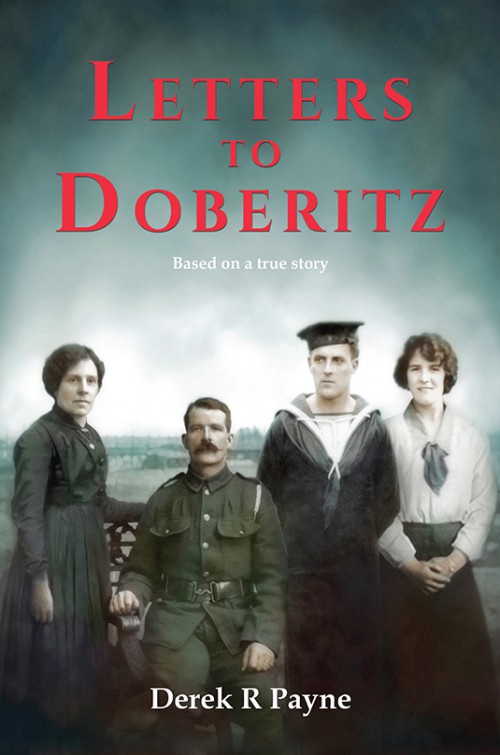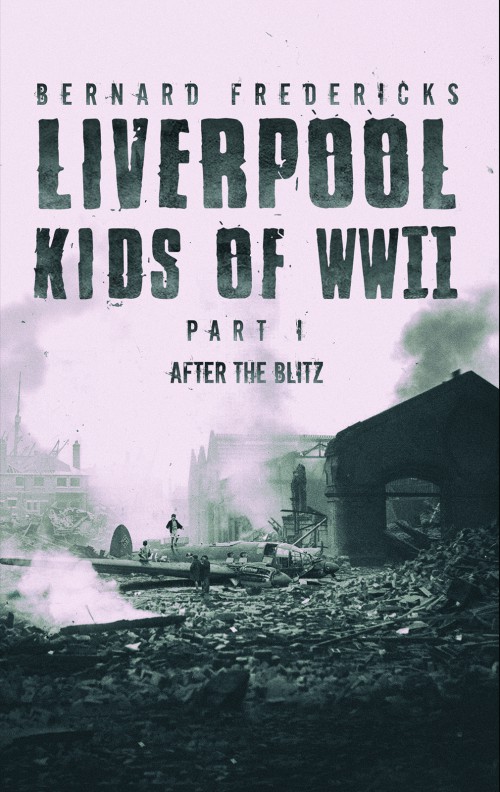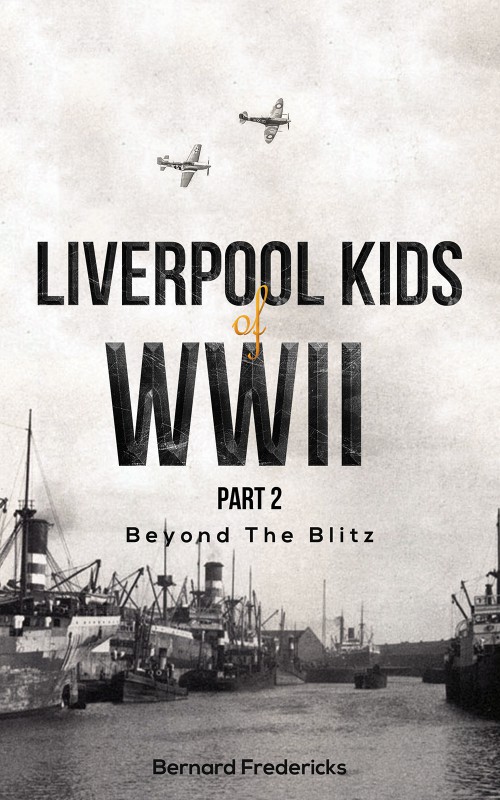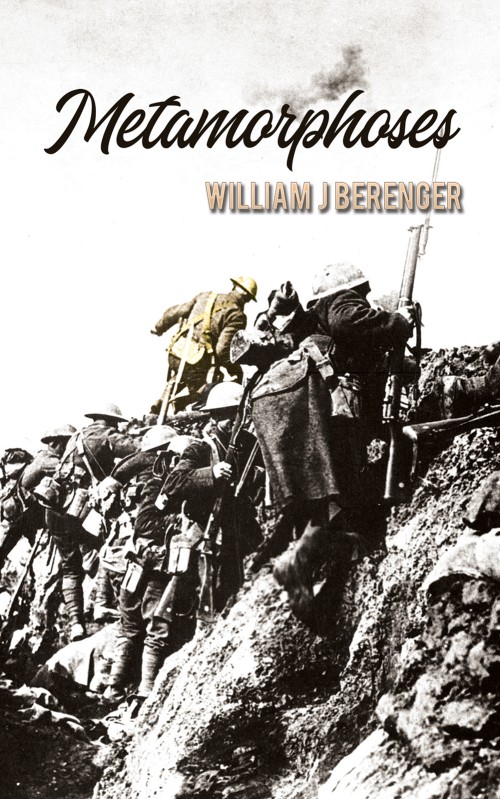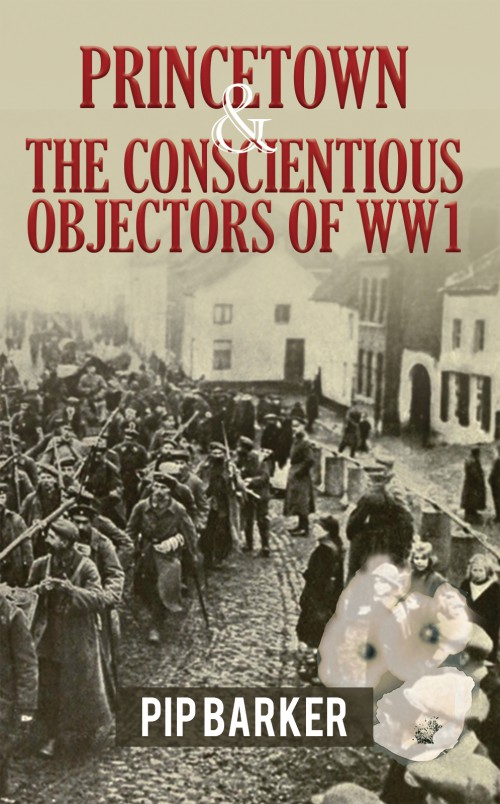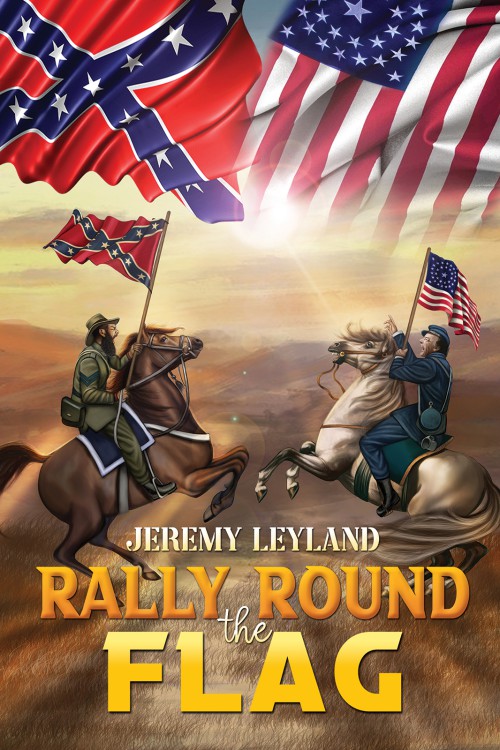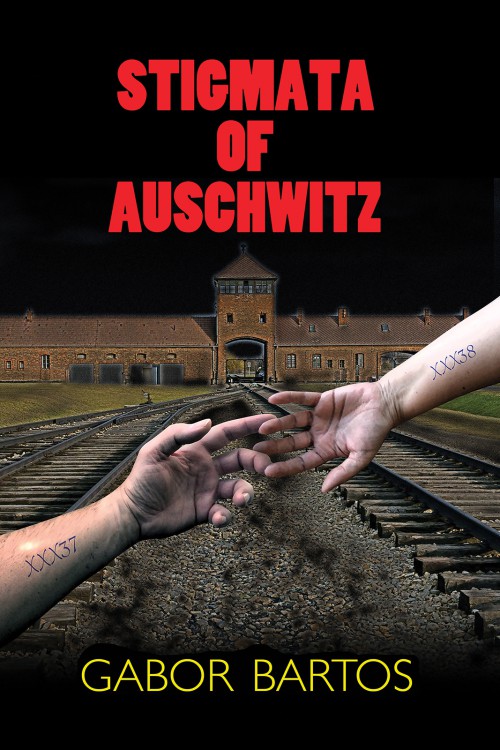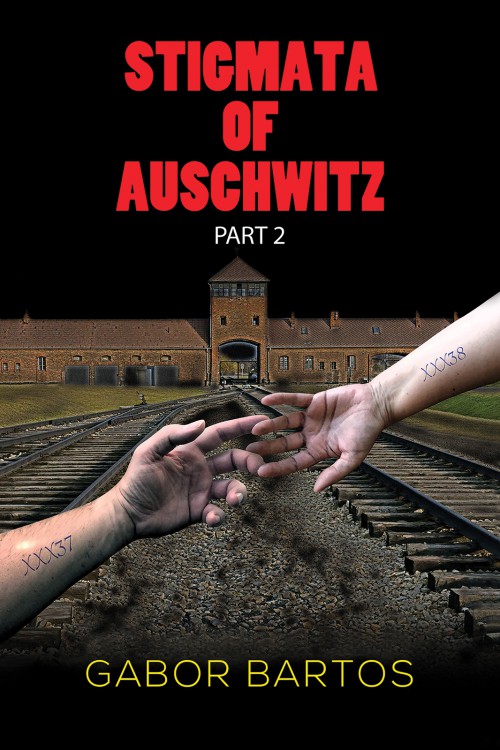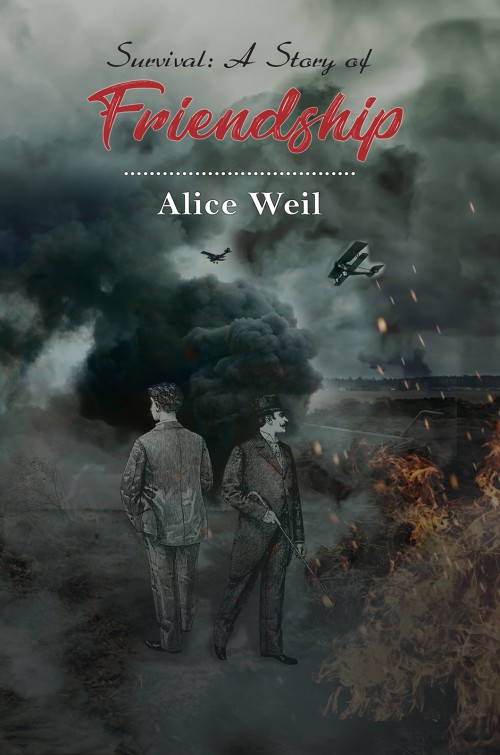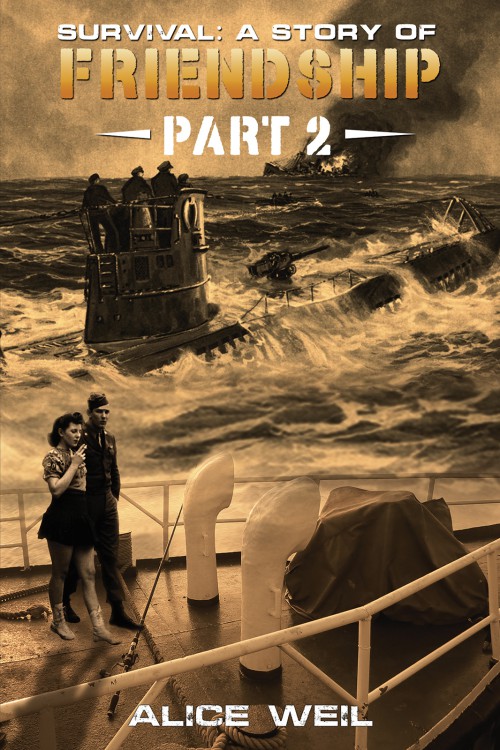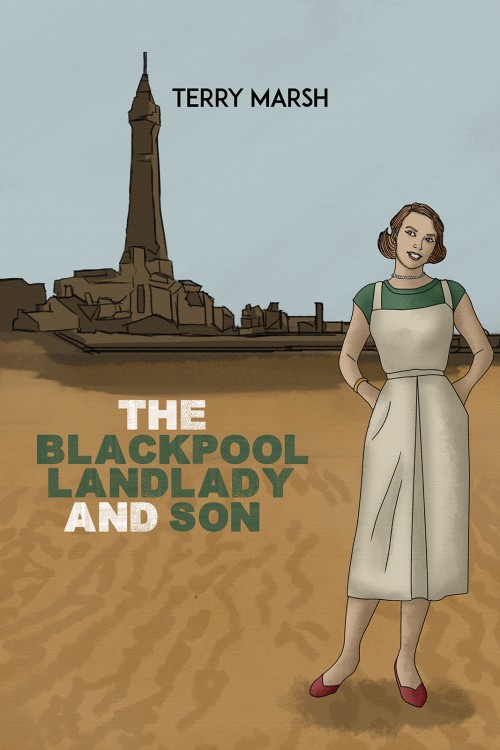-
Letters to Doberitz
This unique and compelling story has laid dormant for a 100 years. Inspired by real events and based on my own family during the First World War, Letters to Doberitz is set between a German prison-of-war camp, the battlefields of France and family back in Bristol, as father and son endure very different wars. These were real people. They are my ancestors and family who left an extraordinary tale to be told. A lie is made in the name of love, with letters written compounding the deceit for years, all to protect the man that they loved. This is their truly unique story.
£3.50 -
Liverpool Kids of WWII - Part 1
The Liverpool Blitz is over…
The seven-year-old boy who was evacuated in The Green Gates Story, comes home after many months away, and is faced with changes to his life: house moves, new districts, new faces…
No sweets, because Mum’s used the coupons for sugar.
What are bananas?
What’s ice-cream?
White bread?
Upon his return to his home city and with his evacuation experience behind him, he views his life ahead as a series of hurdles, but the War is ongoing…
Toys? – Pretend games and a good healthy imagination.
Free-time? – Fun of collecting waste paper, scrap metal, bones and rags, in support of the war effort.
His first trip into town, shopping with Mum, and the surprising sight of big blackened shells, once shops, now dark spaces between buildings, which had suffered direct hits, torn apart innards and burnt deposits.
Blast waves obliterating shop windows and doors of adjacent buildings, displaying:
Heaps of broken bricks
Shattered concrete supports
Splintered wood floors hanging drunkenly, with massive heaps of dust and debris deposited on the piled remains, awaiting attention and clearance.
How to cope with the unnecessary death of a classmate, killed at play, after accidentally falling through the blitzed roof of an unsafe bomb-damaged house?
When the supply and demands of shortages cause the theft of a family bicycle.
Kids discovering the incomprehensible: German POWs sitting smoking, chatting and laughing, employed in collecting and stacking usable bricks from a bomb site, watched by a grey-haired bespectacled British soldier sat in his parked army lorry when he was not reading a dog-eared copy of Lilliput magazine.
Same kids, frowning and mindful of captured British soldiers packed into overcrowded huts inside barbed-wire enclosures, overlooked by machine-gun towers, in the Fatherland!£3.50 -
Liverpool Kids of WWII, Part 2
The boy was growing into youth – not yet a teenager – but was bright enough to know his country was in a war that it mustn’t lose, that his brother and uncles were also part of this deadly struggle…
Melodious harmonies and helmets were heard and seen at the impromptu Christmas party his mum and dad had arranged. He was as inquisitive as could be because it sounded like the Americans had arrived with Uncle Jim for the little house party he’d eavesdropped about over the last few days.
“Gosh a’mighty!” he heard one over-the-pond voice exclaim. “You got gas lighting but no electricity in the house, huh?”
The front room was alive with noise generated by adults, both seated and standing, in a happy conversation. Already, a smoky fuzz was forming from lit cigarettes, held firmly between thumbs and forefingers and used sometimes to emphasise a point or two in the friendly interchange of chit-chat.
The first thing he noticed was one policeman’s helmet and two American army white military police garrison caps grouped together at one end of his mum’s upright piano top. Railway policeman, Uncle Jim was in boisterous good humour with the two Americans.
Suddenly, his young eyes lit up as he spied a crumpled untidy mess of military equipment in the corner of the room, which drew him onto it immediately. He could see a US army belt with what looked like a brown wood baseball bat attached, as well as a set of handcuffs.
£3.50 -
Metamorphoses
“Returning to a rejuvenated South Australian infantry battalion, after having been severely injured at Gallipoli, newly promoted Sergeant Major William Berenger finds himself in the sleepy village of Albert on the Somme on the eve of a massive Australian assault at Pozières. Having married Juliana, whom Berenger had first met 15 years earlier as a Boer prisoner in the South African war, Berenger is called again to the colours, despite the impending birth of their first child.
A young British soldier, Private Reginald Atkins from the Ox and Bucks finds himself trapped in a shell hole in front of the Australian trenches. He is soon joined by an injured Australian, Private Lachlan Watts trying to make his way back to his battalion. Subsequently, both Watts and Atkins are tried for cowardice: the Australian soldier being found Not Guilty, whilst the British soldier is unjustly executed.
Whilst on a night reconnaissance mission in No Man’s Land, Berenger encounters a German soldier from the Bavarian 16th Reserve Infantry Regiment, whom he severely injures but does not kill. Removing this soldier’s identity tags, he discovers upon slithering back to Australian lines, the soldier’s identity as hitherto anonymous aspiring artist, Adolf Hitler.
Berenger discovers that the Germans have been attempting to tunnel under Albert in an attempt to blow-up the Australian lines. Pozières must be taken before the Germans thwart the Allies’ imminent assault.”
£3.50 -
Not for the Telling
A minor road accident led to a chance meeting of two new undergraduates, whose origins, study paths, and potential employment proved to be so contrasting. War was out of the question at the time, but when it arrived it enabled both women to devote their interests to a common objective. One found her metier in the air. Though discouraged by the exclusion of women from flying in the air force, nevertheless she seized a golden opportunity to fly in the service of her country. Her wartime record was distinguished and record breaking. Meanwhile, the other was recruited into an anti-espionage service designed to curb the activities of those citizens who were bent on crippling the national effort, if and when war actually came. The ensuing wartime enabled both women to excel in their respective duties, one in the physical sense, the other surreptitiously. On leaving university their ways had taken them apart, through unexpected adventures, trials, tribulations and various love matches, but a second sheer chance in their lives brought them together again, after losing each other and forgetting their former friendship.
£3.50 -
Princetown and the Conscientious Objectors of WW1
Over 16,000 men refused to fight in WW1 and became known as Conscientious Objectors.
Their initial incarceration in prison was deemed unsuitable for many and they were then sent to work centres to be engaged on work of national importance.
One such work centre was in the village of Princetown, Devon, home of the notorious Dartmoor Prison.
This book explores its change of purpose to that of work centre and the daily life, type of work and health of those COs held there. It also looks at the impact of their arrival on the local community and the attitudes of the village residents towards them.
£3.50 -
Rally ’Round the Flag
“A timely reminder of how the past colours the future”
Mary Cleeves
Rally ’Round the Flag is a thrilling historical novel set during the American Civil war.
The story begins in the mid-19th century in a large, Lancashire cotton mill,
which never stops production for 24 hours a day, seven days a week. Here a family with rich and privileged men controls the lives of the desperately poor men, women and children who are forced to work for them...or be turned out onto the street with no income nor roof over their heads.
In 1861 events move to the USA, where the first real battle of the Civil War started.
The history of the (first) Battle of Bull Run is told realistically until, close to its end, it takes on an alternative life as a result of just one military action, which historically changes the remaining years of war. Senior General in the Confederate Army Robert E. Lee at that moment speaks of how he now sees war in this new version of victory: “Once you get 'em on the run don’t stop. Never give up the pursuit.”
This fascinating account of the war, doomed to kill a quarter of the entire population
of the USA, leads the reader through many of the major locations and actions of the war. The grim reality of the five years from 1861 describes both the true historical characters, as well as the three imagined young Englishmen whose lives now lie in the USA. Here they are destined to see, and even to experience at first-hand, the appalling bloodshed, death and destruction of a war so often fought at very close quarters. Here a brother could find his father or his son aiming a rifle at him across a battlefield; a general could be responsible for the death even of his grandson.The story roars faster and faster through the hell of shot and shell.
Cannons, and shells from these cannons, and also from mortars, were designed to slice through great swathes of human flesh, while at close quarters Bowie knives appeared to rip out the throats of an enemy fighting for his own life within an arm’s reach.
The bodies of the enemy lay scattered across innumerable battlefields
and became food for the crows. An observer of a huge battle recorded in his diary that he had seen: “Entire regiments disappeared in a few minutes. Legs, arms, knapsacks and rifles thrust high into the air and then scattered on the bloody grass.”
The reader may ask: “Can history be changed by the alteration of one small event?”
But is there more than a little similarity in the 19th century between slavery in the USA and the penury, desperate hardship and death from disease walking the streets of Oldham, as well as the lack of any security existing for all those working in the mills, factories and mines of Great Britain?
One part of the same American country wants to destroy the neighbour it has lived with peacefully for more than one hundred and fifty years.
An extraordinary read awaits you...if you rally ’round the flag, but which flag do you choose?
£3.50 -
Stigmata of Auschwitz
The Stigmata of Auschwitz is the brief story of the life and love of Rebekah and Gabriel.
The two main characters of the story are a young Jewish couple whose lives bringing up their young child are cut short and sacrificed to an evil Nazi ideology.
The story takes place between March 1938 to September 1941, in the time of the Shoah (the Holocaust).
Gabriel is from Budapest in Hungary, where he is sent on a mission to Munkács in Western Ukraine. There he meets Rebekah. They fall in love, marry and settle in Munkács, where the population is 42% Jewish.
In Munkács Gabriel and Rebekah build up a successful business and public life: he becomes a councillor representing the Jewish community, while she is a member of the Union of Jewish Women. To complete their enviable lifestyle, they have a much-loved baby son.
But their dream is destroyed by the antisemitism unleashed at the outbreak of the Second World War; their life together is ruined by the ruling fascist elite. Consequently, they have departed to Auschwitz, where they are murdered.
However, their two-year-old son is rescued and raised by their neighbour.
£3.50 -
Stigmata of Auschwitz Part 2
The Stigmata of Auschwitz is the brief story of the life and love of Rebekah and Gabriel.
The two main characters of the story are a young Jewish couple whose lives bringing up their young child are cut short and sacrificed to an evil Nazi ideology.
The story takes place between March 1938 to September 1941, in the time of the Shoah (the Holocaust).
Gabriel is from Budapest in Hungary, where he is sent on a mission to Munkács in Western Ukraine. There he meets Rebekah. They fall in love, marry, and settle in Munkács, where the population is 42% Jewish.
In Munkács, Gabriel and Rebekah build up a successful business and public life: he becomes a councillor representing the Jewish community, while she is a member of the Union of Jewish Women. To complete their enviable lifestyle, they have a much-loved baby son.
But their dream is destroyed by the antisemitism unleashed at the outbreak of the Second World War; their life together is ruined by the ruling fascist elite. Consequently, they departed to Auschwitz, where they are murdered.
However, their two-year-old son is rescued and raised by their neighbour.
£3.50 -
Survival: A Story of Friendship
It is a true story based on 13 years of research: the story of friendship between a Jewish boy, Freddy and his Christian friend, Helmut (who are separated by the political turmoil of the aftermath of the First World War in Germany), who obliged Freddy and Freddy’s family to seek refuge in France. It is also the story of friendship between Freddy and George, Freddy’s classmate whom Freddy meets in school in Paris. Moreover, it is also the story of Sigmund, whose patriotic blindness impacted his and his family’s life; the story of Nellie, who left Germany for Colombia before Nellie’s parents sought refuge in France and whose mission would be to reunite the family in a peaceful and friendly country.
Furthermore, the novel also emphasises the emotional costs of the First World War and its indirect result on the onset of the Second World War.
£3.50 -
Survival: A Story of Friendship – Part 2
Survival: A Story of Friendship – Part 2 is about the voyage Freddy and his mother, Helene, take to escape Europe and the ravages of World War II. After promising Sigmund on his deathbed that they would reunite the family in a peaceful and friendly country, they make their way via ship to Colombia, the country Nellie had made her home just as the Nazi movement in Germany was gaining momentum. After their safe arrival, Freddy is forced to look for work in order to support his mother and himself while adjusting to new surroundings at the same time. After some fortuitous, work-related encounters, Freddy decides to not only run his own lingerie business but produce the raw materials he needs himself.
This is the story of how someone who was unable to complete school or go to university, due to strictly unfortunate circumstances, had the vision and skills to found a company that would provide jobs and well-being. Thus giving back to the country that granted him what the German Nazi government had taken away from him: his nationality.
£3.50 -
The Blackpool Landlady and Son
When 18-year-old Helen Ashton meets Joe McCarthy on the moors of Northumberland she instantly falls in love, certain that her humdrum life had taken a new turn. And for several years it did.
On the eve of the First World War, Helen learns that she is pregnant with Joe’s child, but before she can tell him, he enlists in the army and is despatched to war. She never heard from Joe again, and believed him dead.
When their son, Ben, was born, Helen, in mounting desperation, agreed to marry a retired police inspector with whom she had two children.
In time, her husband of convenience leaves Helen for another woman, and she finds herself on her own in the coastal resort of Blackpool with three young children with only a penurious future to look forward to. But fate intervenes, and with growing confidence Helen turns their home into a holiday hotel and begins welcoming guests. From one she learns that her beloved Joe had not died, but had been discharged into a sanatorium where he languished, a shadow of his former self, depressed, uncertain, confused … and lost, lacking the courage to reconnect with Helen.
By the time of Helen’s death, Joe is living a reclusive life, and his son, Ben, married with children of his own, takes over the Blackpool hotel. It is Ben’s wife, childhood friend Mary, who tracks down Ben’s father, finally persuading Ben to meet him … on the day Joe dies.
£3.50

